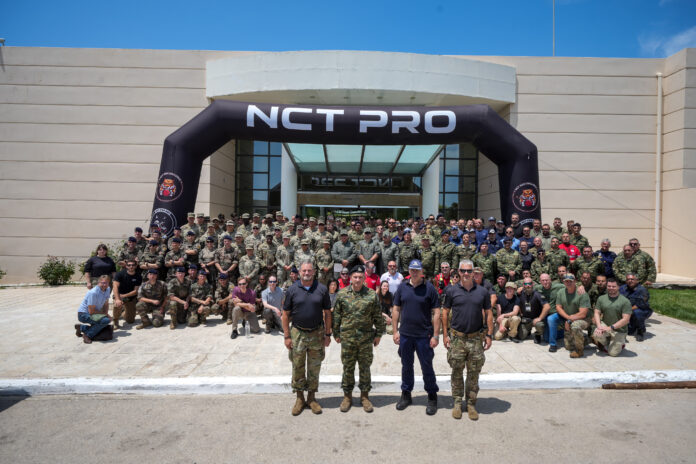By CBNW Magazine –
In early June, the Greek city of Alexandroupoli became the epicenter of one of the most dynamic security training events in Europe: NCT PRO Challenge Europe 2025. Held from June 2-6, the exercise brought together over 300 professionals, including military personnel from 12 different nations, as well as law enforcement, emergency responders, and technology providers from the civil sector.
This year’s edition was conducted under the umbrella of Defender 25: Immediate Response, NATO’s largest operational training initiative, led by the U.S. Army. The aim of the exercise? To strengthen multinational coordination, cooperation and crisis response capabilities in the face of modern, unconventional and hybrid threats, such as chemical and radiological warfare, including the use of drones.
Designed and executed by NCT Consultants, with the support of Booz Allen Hamilton, the exercise pushed participants into simulated crisis environments where chemical and radiological threats, disinformation campaigns, drone assaults, and civil unrest converged. Each scenario tested not just technical and tactical response, but also cross-border communication, coordination, and adaptability under pressure.
A Strategic Location at the Heart of NATO’s Southeastern Corridor
The decision to host the exercise in Alexandroupoli was far from coincidental. Positioned at a critical juncture near NATO’s eastern flank, the city serves as a strategic gateway for military logistics and force projection into Southeastern Europe and the Black Sea region. Its dual role as both a commercial hub and a military transit node made it the ideal setting for simulating disruptions to troop and equipment mobility. By training in a location of such geopolitical significance, participants were exposed to real-world operational constraints and forced to confront the complexities of defending a key logistical artery under contested conditions.
What made the 2025 edition distinctive was the operational diversity of the training environments:
Training operations were conducted across three distinct environments: sea, land, and mountain. Each location presented unique challenges that tested participants’ interoperability, coordination, and adaptability.
- At sea, teams responded to a fast-evolving crisis in a busy port environment. What began as a routine threat investigation escalated into a multi-layered chemical incident, with unmanned aerial systems complicating the operational picture. Participants were challenged to coordinate crowd management, hazard containment, and casualty care under pressure, while simultaneously addressing the risks posed by unknown payloads and persistent contamination. The scenario demanded tight coordination between EOD, CBRN, tactical units, and medical teams across a rapidly shifting operational landscape.
- On land, task forces were deployed to protect critical personnel and infrastructure in the face of civil unrest, improvised threats, and the appearance of unmanned water vehicles. The scenario tested crisis response at the civilian-military convergence, integrating public safety forces with tactical protection units and early-warning technologies for unconventional threats.
- In the mountains, the scenario focused on a radiological threat within a two-phase mission: an initial hostage rescue operation involving tactical entry and area control, followed by a targeted assault carried out by SWAT teams. The sequence involved CBRN units to coordinate reconnaissance, hazard mitigation, and area decontamination in a time sensitive environment and in complex terrain.
Scenarios were built to mirror the complexity of real-world hybrid warfare, integrating the latest in robotics, surveillance, and battlefield communication systems.
Where Innovation Meets Execution
NCT PRO Challenge Europe 2025 served as a live testing ground for innovation. The event facilitated a rare convergence of first responders and industry pioneers. Civilian technology developers were not simply observers; they were embedded in the process, delivering real-time support and showcasing tools that could soon define the future of crisis response. From CBRN sensors and autonomous systems to tactical communication platforms and data fusion tools, the technologies deployed in Alexandroupoli were placed directly into the hands of operators. This created a mutual feedback loop, where developers could observe performance in live conditions, and responders could adapt to cutting-edge solutions in a controlled but unpredictable environment. One of NCT’s main goals is to enhance civilian-military cooperation to create a direct link between those who develop new technologies and those who will eventually be using them in a real-life scenario.
“This isn’t simulation for the sake of training,” noted NCT’s CEO Ilja M. Bonsen.
“It’s about preparing for what’s next by training with what’s already here.”





